In crowded places, fires often occur. They try to prevent fire hazard situations in advance, however, this does not always work. Sometimes you have to deal with a fire that has already begun. For these purposes, a special notification system is provided. In this article we will consider what AUPS is. The decoding of this abbreviation is quite simple. How does she sound? The automatic installation of a fire alarm - this is AUPS, in this article we will familiarize ourselves in detail with the principle of its operation.
What it is?
Any fire alarm system is needed for a timely response to a fire source. These installations successfully detect the location of the fire and, using the algorithm of actions laid down by the program, react to this incident. These are the functions performed by AUPS (the abbreviation was decrypted earlier).
Destination
These complexes collect and process the data obtained during the work on the main parameters and output a certain signal about the fire that has begun to the guard post or to the central control room. After that, certain actions are already being taken to evacuate people and prevent fire.
Thus, the automatic installation of a fire alarm, the same AUPS, is a combination of individual structural elements, each of which has its own purpose and performs certain functions in the system.
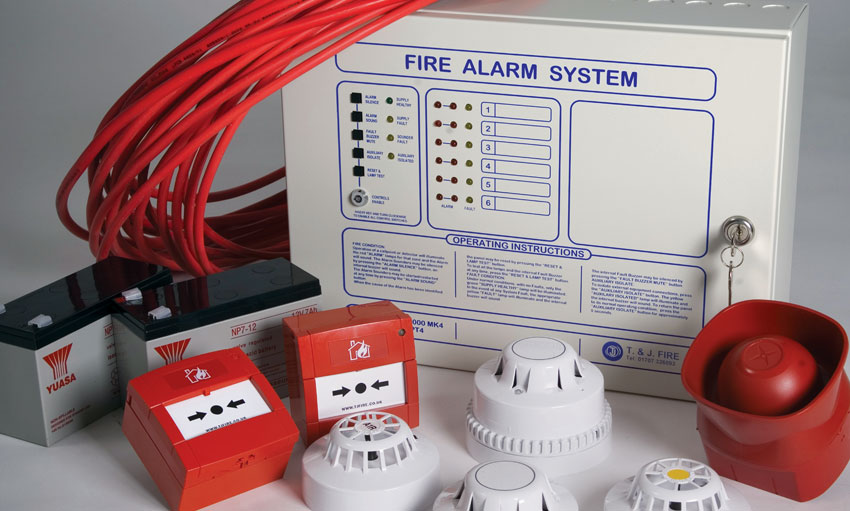
Regulatory framework
Like any public safety measure, the installation of automatic fire alarm systems is controlled by relevant documents. These systems must be installed where a fire can result in death or injury to the population.
It is regulated by federal laws No. 69-ФЗ dated December 21, 1994 “On Fire Safety” and No. 123-ФЗ dated July 22, 2008 “Technical Regulations on Fire Safety Requirements”.
If, when checking by fire departments, it turns out that this equipment was not put into operation, then the culprits are responsible for this in the form of material losses or suspension of operation of the enterprise, up to its complete closure.
Component systems
Now let's look at what AUPS consists of (the abbreviation decoding was presented earlier).
Each system, regardless of what size it is and what area it is designed for, consists of the following components:
- detectors are sensors that detect certain changes in environmental conditions (smoke, temperature rise, etc.);
- control panel - this device collects and processes information received from sensors;
- sirens - these devices act on the auditory or visual analyzer of a person and inform him that a fire has begun and that it is necessary to evacuate (sirens, displays, lamps, etc.).
In addition to the above, systems use devices that provide centralized control and management. For small businesses, this is a common control panel with a limited number of commands.
Large enterprises use a more complex management system. For this, personal computers can be used on which system control programs are installed.

Fire alarm detectors
What are they? One of the main components of a fire warning system is a fire detector. The type of the entire APS depends on this device. They differ among themselves in several parameters, depending on:
- detection principle;
- method of transmitting information;
- tracking type of a controlled parameter.
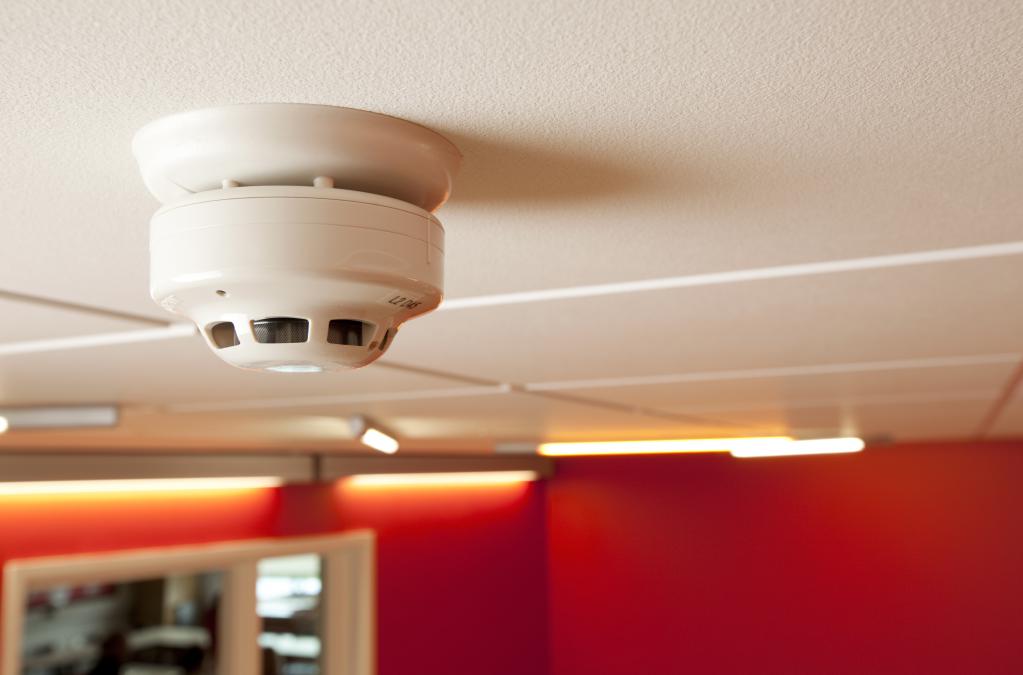
Fire detectors are also divided into groups, given their sensitivity to certain factors of the fire. Allocate:
- Smoke detectors - the most popular sensors. They respond to smoke, which very often accompanies a fire. That is why this type of sensor is the most efficient and fastest. They are often installed indoors. These sensors are relatively inexpensive, but even dustiness in the room can interfere with their operation. Also, they do not respond to black smoke, which is formed during the burning of rubber.
- Heat detectors react to changes in temperature and the speed of these changes. Typically, in such sensors, the sensitivity threshold is 70-72about. However, such sensors do not make sense in rooms with high ceilings or in hot workshops.
- Flame detectors are triggered when an open flame or smoldering fire is detected. They are used where heat and smoke sensors are not practical. It can be open areas or enterprises of the oil and gas industry. They are considered the most expensive, but incandescent lamps, solar radiation, welding, or simple lightning can interfere with their work.
- Combined detectors. These fire detection tools affect several parameters at once, which increases their effectiveness. For example, they can respond to smoke and heat.
Types of installations

To date, there are 3 types of AUPS (decoding of the abbreviation was presented earlier):
- Threshold Fire Alarm serves to ensure fire safety in residential premises and at facilities with an average and low probability of a fire. This system is based on loops to which sensors are connected. If one sensor detects a source of ignition, the entire loop will work, which can control up to 30 sensors.
- Address polling APS. The essence of her work is to periodically interrogate the sensors, which allows not to wait for a change in its state. This is done from the control panel. Thus, it is possible to periodically check the health of the APS and timely troubleshoot. This type of system is used to ensure fire safety in offices, shops, medical and educational institutions.
- Address-analog AUPS. The optimal and most effective form of fire safety. The principle of operation is that the main thing here is the control panel, which performs many complex functions. This system does everything by itself, thereby reducing the time required to find the source of ignition.
The principle of operation of the device
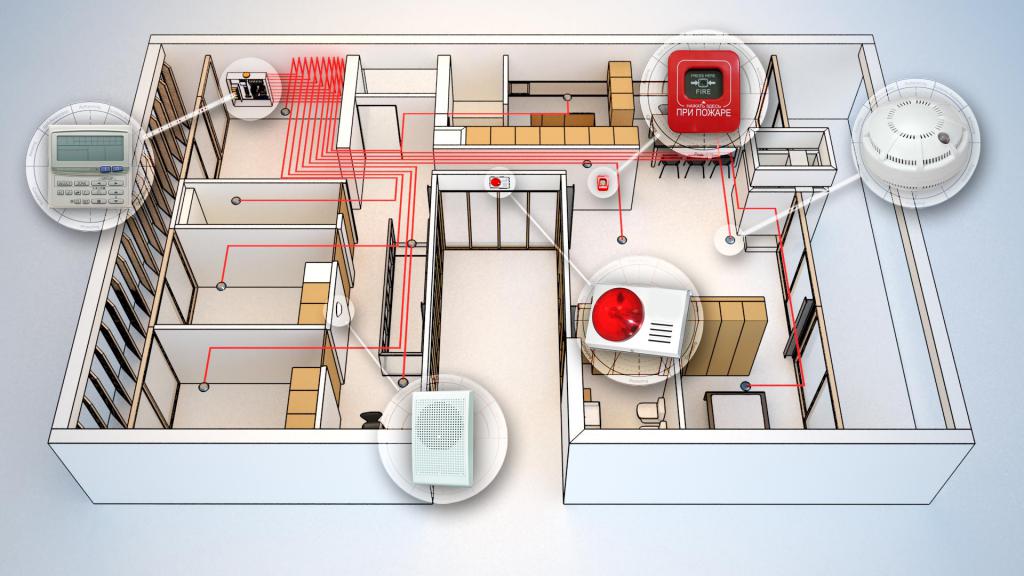
In the work of each such device is a certain set of actions, the implementation of which is aimed at activating the warning and evacuation system, determining the place of ignition and involving other components of the system.
Initially, after the detection of a source of ignition, the system informs of the presence of a fire hazard situation. It can be a sound, light-sound or voice notification. His choice depends on how many floors in the building, what is the area of the premises and the height of the ceilings. That is, the optimal warning system is selected.
The next action of the system is to unlock all devices that may interfere with the evacuation of people. As for the elevators in the building, then they cannot be used in such a situation. Fire can damage the elevator's functioning system and you will simply find yourself in a smoky trap.Therefore, all elevators are sent to the first floor and turned off until the fire is eliminated.
After the system has given instructions for evacuation, after a certain period of time, fire extinguishing and smoke removal systems are connected. Depending on the purpose of the building, the system can use gas, powder, water or water filling to prevent fire.
Smoke exhaust systems often work together with the automatic fire alarm system and, in the presence of a fire alarm, they automatically remove smoke and combustion products through ventilation, preventing them from getting in the way of people evacuating.
Fire alarm requirements
According to the norms and rules, fire safety systems must comply with a number of mandatory requirements, the functionality of the system and its operation, if necessary, depend on it:
- The system must operate around the clock in order to detect the occurrence of a fire at any time of the day or night, and in the early stages.
- Effectively determine the location of the fire.
- There should be no failures in the operation of devices and false alarms.
- The information should be interpreted and submitted to the control panel in a concise and understandable form.
- The system should not be stopped due to lack of power supply. To do this, backup system power must be provided.
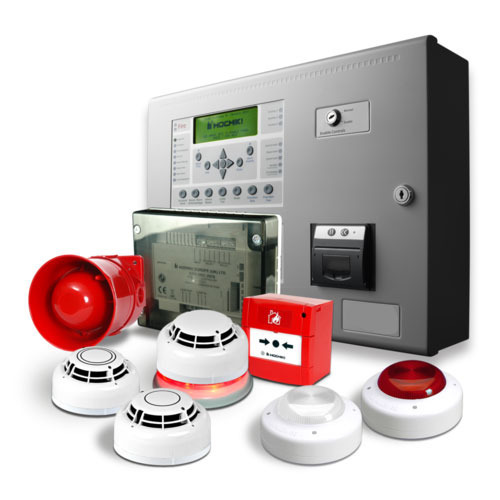
Assembly and installation
It is worth paying your attention to the fact that people's lives depend on the operation of the fire alarm system. Therefore, the installation of APS must be carried out by a specialist. Even if it seems to you that there is nothing complicated in this, entrust this matter to a professional.
Before installing the system, all its elements must be checked for operability. After that, the APSS equipment receives a certificate stating that it complies with fire safety standards.
Equipment installation is carried out according to the project and all related requirements. Also, the installed device must be licensed by the Ministry of Emergencies. All this will help to avoid further problems during inspections by fire departments.
After mounting the system, all its mechanisms are set up. The specialist installs a program that allows you to control the APS.
The last stage of installation is a technical examination and commissioning of the system.
Maintenance
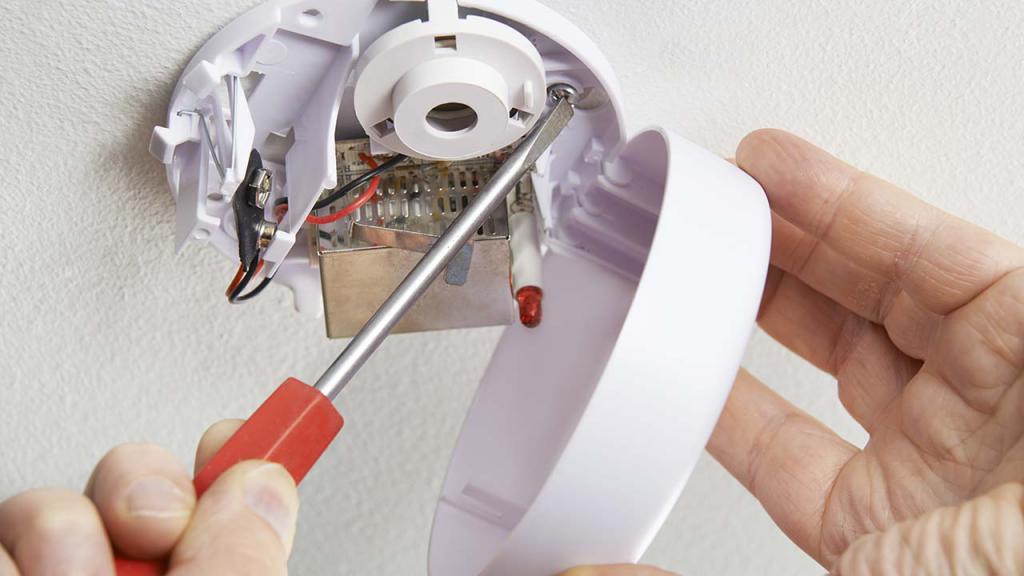
For continuous monitoring of the system, the availability of scheduled inspections is provided. During these inspections, it is necessary to provide a concluded contract for the maintenance of the automatic fire alarm system with an organization licensed for this.
System maintenance should be carried out at least once a month. During this, all data is entered in a special journal, with which you can evaluate the entire dynamics of equipment operation and draw a conclusion about its technical condition.
Such frequent checks are necessary to ensure reliable system operation. In addition, competent design and quality installation also affect the efficiency of the system. Therefore, the issues of installation and maintenance of APS must be approached very scrupulously, because the lives of many people can depend on this.
